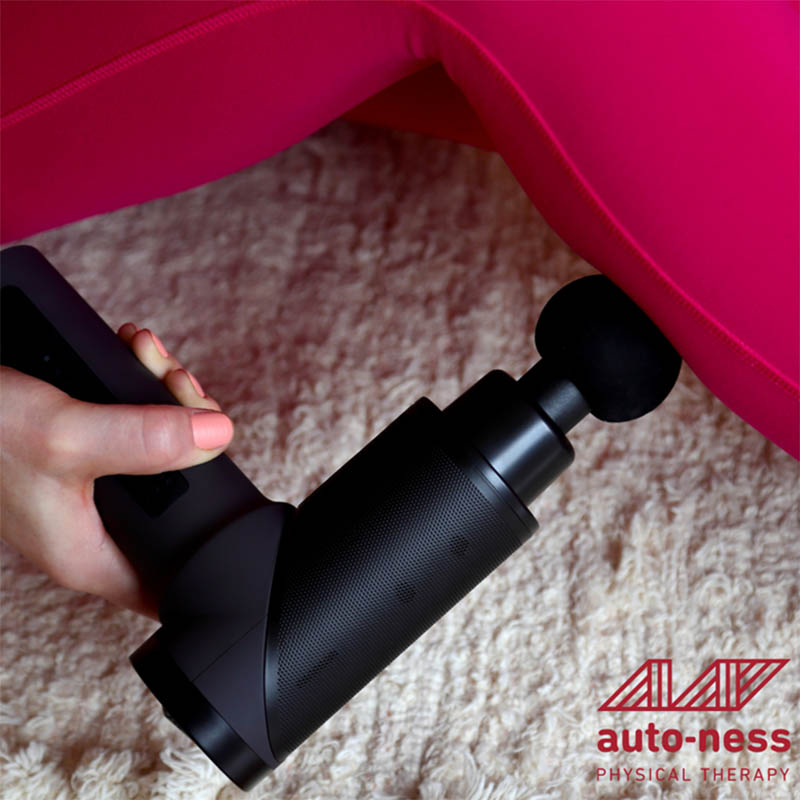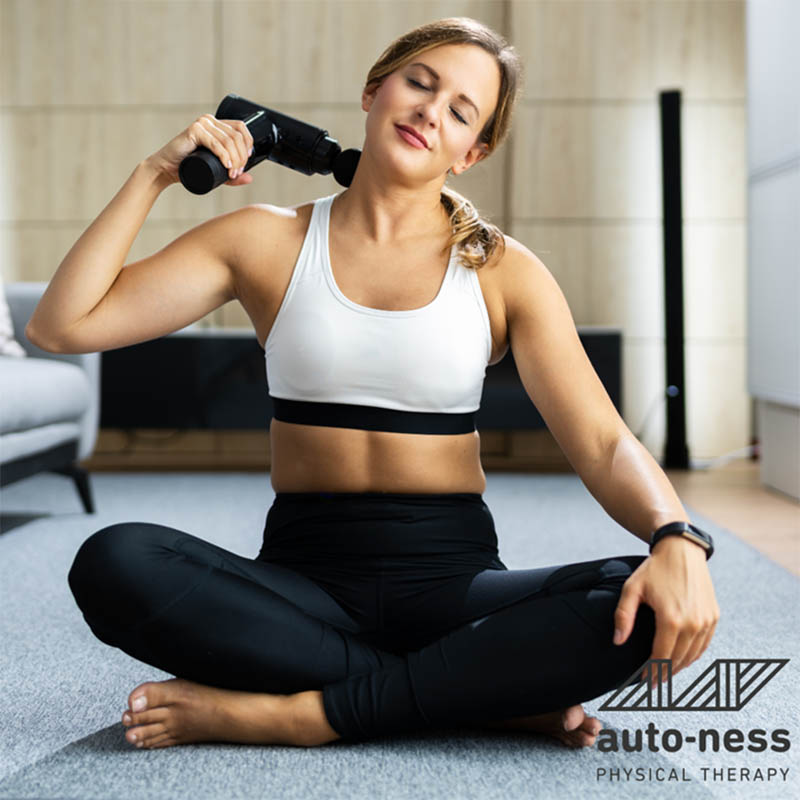Welcome to another engaging exploration on our blog, where today we’re focusing on a tool that’s been gaining traction in the worlds of physical therapy, sports medicine, and wellness: the massage gun. With its rise in popularity, many of our readers have been buzzing with questions about percussive therapy: Does it work? What are the benefits? And, if you’re considering adding one to your recovery toolkit, what should you look for? Let’s dive into these questions, armed with both science and practical insights.
The Beat of Percussive Therapy: Does It Really Work?
At the heart of the massage gun’s appeal is percussive therapy, a technique that delivers rapid, repetitive strokes into muscle tissue, reaching deep into the fibers to provide a myriad of benefits. But does it live up to the hype? The short answer is yes, with a few caveats.
Percussive therapy works by stimulating the muscle tissue, promoting increased circulation and easing muscle tension and soreness. This stimulation can lead to a range of benefits, from improved recovery times to enhanced performance. However, like any therapy or tool, its effectiveness can vary depending on how, when, and why it’s used.
The Symphony of Benefits: Tuning into What Massage Guns Offer
Let’s break down the potential benefits and why they matter:
- Improved Circulation: The rhythmic pounding of a massage gun stimulates blood flow to targeted areas. This enhanced circulation brings a flood of oxygen and nutrients, crucial for recovery and inflammation reduction. Think of it as watering a thirsty plant; the nutrients help rejuvenate the muscle, fostering a faster recovery.
- Eased Muscle Tension and Soreness: Breaking down knots and releasing tight areas, percussive therapy helps muscles relax and recover. This is akin to loosening a tight knot in a rope, allowing it to regain its flexibility and function.
- Aided Range of Motion: Stiff muscles can hinder your mobility. By increasing tissue elasticity, massage guns help improve your range of motion, making those morning stretches or golf swings feel less like a challenge and more like a charm.
- Enhanced Athletic Performance: Here’s where the domino effect comes into play. Less tension and quicker recovery mean you can return to your training regimen sooner, with less downtime. This doesn’t just apply to elite athletes; even weekend warriors can find themselves bouncing back faster, ready for the next adventure.
- Scar Tissue Management: Just as the ocean’s waves can smooth a rough stone, the continuous impact of a massage gun helps break down scar tissue, promoting more flexible and functional healing.
- Improved Muscle Strength and Endurance: While direct research might still be catching up, it’s not a stretch to say that improved circulation, reduced soreness, and enhanced recovery can contribute to overall better muscle performance over time.
Choosing Your Percussive Partner: What to Look For in a Massage Gun

When venturing into the vast sea of options, here are some lighthouses to guide your way:
- Power and Speed Settings: Versatility is key. Whether you’re dealing with a tender spot or a stubborn knot, having a range of settings at your disposal ensures you can tailor the therapy to your needs.
- Attachments and Accessories: Different muscles require different approaches. Look for a massage gun that comes with a variety of heads, each designed for specific parts of the body, from the delicate areas around your neck to the dense muscle of your quads.
- Battery Life and Ergonomics: A massage gun should be ready when you are and comfortable to use. Long battery life and a design that feels right in your hand are must-haves.
- Noise Level and Brand Reputation: A quiet motor and a brand with a track record of quality and customer satisfaction will make your experience all the more enjoyable.
A Word of Caution
While massage guns can be a fantastic addition to your recovery arsenal, they’re not without their risks. Specifically, using these devices near sensitive areas like the upper neck can lead to unintended consequences, such as vertigo, in some cases. This is a reminder to use percussive therapy with awareness and respect for your body’s limits.
Final Thoughts
Massage guns, powered by percussive therapy, offer a promising path to improved recovery, performance, and overall muscle health. As with any tool, the key is to use it wisely, in harmony with your body’s needs and signals. For those interested in exploring this therapy further, we at Auto-Ness Physical Therapy are here to guide you, ensuring that your journey towards wellness is both safe and effective. Dive deeper into recovery techniques and wellness insights on our blog at Auto-Ness PT Blog. Here’s to your health, one percussion at a time!
FAQs on Percussive Therapy and Massage Guns
Q: Can percussive therapy replace traditional massage?
A: While percussive therapy offers many benefits similar to traditional massage, such as improved circulation and muscle relaxation, it doesn’t entirely replace the nuanced touch of a Physical Therapy Professional. Consider it a convenient supplement to professional care, especially for routine maintenance or immediate post-workout recovery.
Q: How often can I use a massage gun?
A: The frequency can vary depending on your specific needs and tolerance. Generally, it’s safe to use a massage gun for 2-3 minutes per muscle group, once or twice daily. Listen to your body—if you experience pain or discomfort, reduce frequency or duration.
Q: Is there anyone who shouldn’t use a massage gun?
A: Yes, certain individuals should exercise caution or avoid using massage guns altogether. This includes those with certain medical conditions such as neuropathy, skin lesions, or those who are pregnant. Always consult with a healthcare professional if you’re unsure.
Q: Can using a massage gun worsen existing injuries?
A: If used improperly or on injured tissues without professional guidance, there’s a risk of exacerbating injuries. It’s crucial to consult with a healthcare provider or a physical therapist to ensure it’s safe for your specific situation and to receive guidance on proper use.
Q: Will a massage gun help with muscle growth?
A: Indirectly, yes. By aiding in recovery, reducing muscle soreness, and improving circulation, a massage gun can help you return to training sooner and potentially contribute to muscle growth over time. However, it’s not a direct substitute for strength training and proper nutrition.
Q: Are there any side effects to using a massage gun?
A: Most users experience positive outcomes with proper use. However, overuse or incorrect application can lead to bruising, increased inflammation, or discomfort. Additionally, as mentioned, applying it near the upper neck and other sensitive areas can, in rare cases, lead to issues like vertigo.
Q: What’s the best time to use a massage gun: before or after exercise?
A: Both! Using it before exercise can help warm up the muscles and increase flexibility, potentially improving performance. Post-exercise, it’s great for aiding in recovery by reducing muscle soreness and facilitating muscle relaxation.


